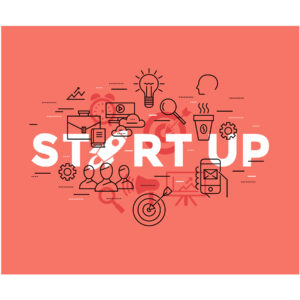A primer for startups
Why bother with IP?
Intellectual property (IP) is a much-talked-about, but little-understood, part of the startup world. They are little-understood because they are legal rights. As a result, the discussions are often full of jargon and based on the assumption that these rights should be defended at all times and in all situations.
This primer starts from a different premise: IP is an asset that can be used strategically as part of your growth. In this regard, there are three main areas where IP can be important for founders and startups
• Protection
• Value
• Risk
Before exploring these areas, it will be useful to define what IP is.

What is IP?
Intellectual property rights is an umbrella term for several related types of rights. While there is general convergence on the legal definition, these rights are nationally based. Each country, therefore, will have its own variation. As a result, if the IP has to be registered, it has to be registered in each country you want protection in. We’ll return to this point later as it shapes how and when to use IP strategically.
Below are the five main types of IP and a brief description of what they cover, whether or not they need to be registered to gain the right and a brief description of the type of protection provided.
1. Copyrights
a. Protects original works of authorship like books, music, and software.
b. Automatically applied upon creation; no registration is required.
c. Essential for preventing exact copying or counterfeiting by competitors.
2. Patents
a. Covers inventions including processes, products, and certain plants.
b. Offers broad protection against unauthorised use.
c. Requires application and is time-limited but crucial for novel solutions.
3. Trademarks
a. Secures logos, symbols, or phrases that distinguish your brand.
b. Must be registered for adequate protection.
c. Ensures your brand identity is not misused or confused with others.
4. Trade Secrets
a. Protects valuable, non-public business information.
b. Includes marketing plans, customer lists, or future product ideas.
c. No formal registration but requires measures to maintain secrecy.
5. Design Rights
a. Protects the visual design of objects.
b. Automatically protected, though registration is recommended.
c. Prevents others from copying the appearance of your product.
Thinking sensibly about IP
If we think of these five IP types as a strategic asset, we can see three ways they can be used. They can be used either defensively or offensively.
Protection
This is a defensive position. IP, such as patents and trademarks, can be used to create a defensive moat against competitors. If you are the only one who can legally use a key asset like an invention or brand element, then it makes it difficult for others to offer a similar product or service.
Value
IP can be used offensively to generate value in the company. Having patents, well-known trademarks or designs can be attractive to investors and buyers. Depending on the business, having copyrights can also create value, especially if they can be monetized.
Risk
While we’ve been talking about IP that the business owns, there is another aspect that we need to take into account: how IP owned by others creates risk in the business. This can be a threat to your brand if someone else has trademarked your name or logo. It could also be the risk that large language models and generative AI face over the material they are trained on.
Choosing when and how to use IP
As a startup, you have limited resources, both money and people, so you have to be strategic in what you invest these resources in. IP is no different. Thinking about prioritising your use of IP will ensure you gain the maximum value from the resources you spend on your IP.
– Dr Stephen Moffitt
(photo: frimufilms/Freepik)

 Winter 2021
Winter 2021